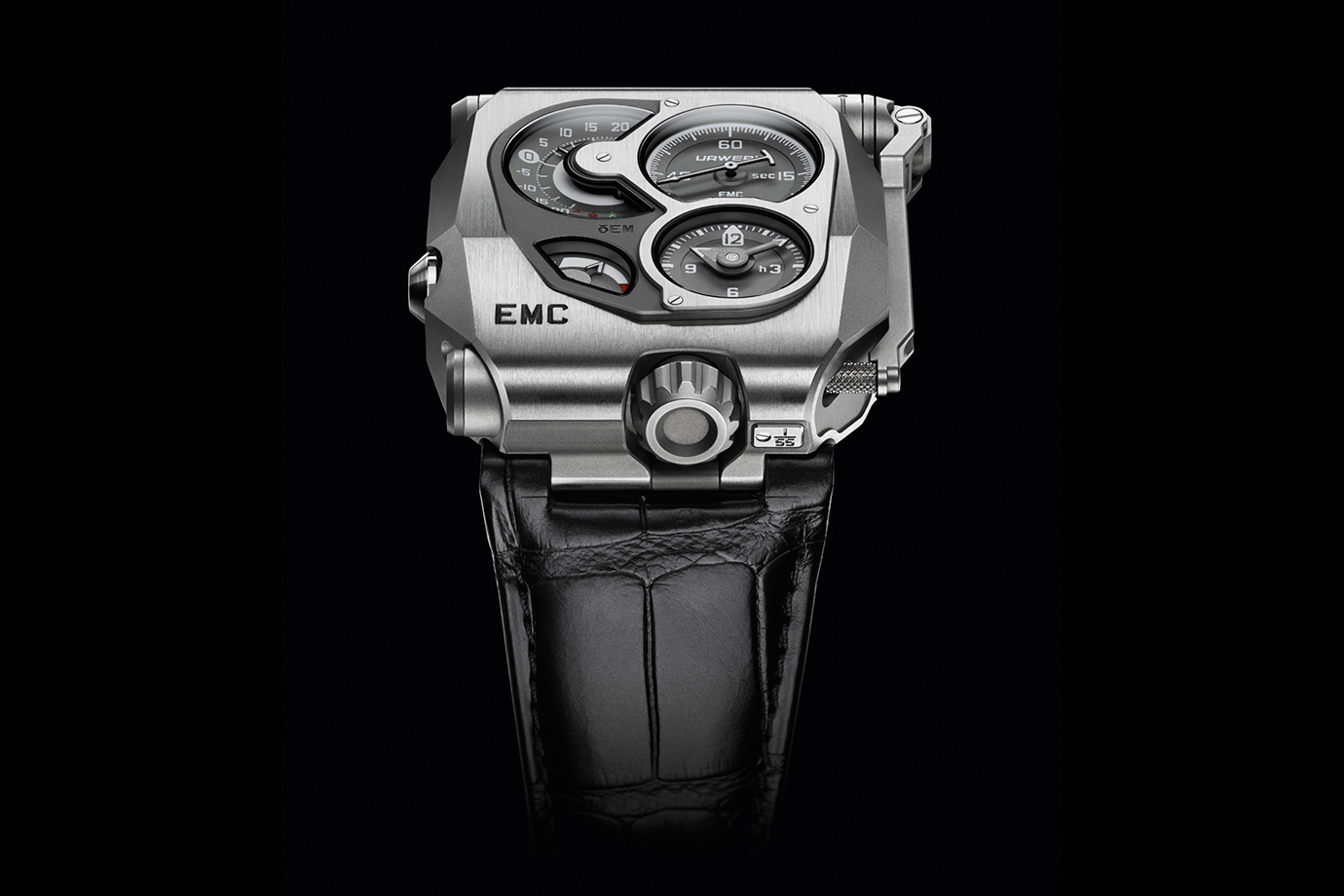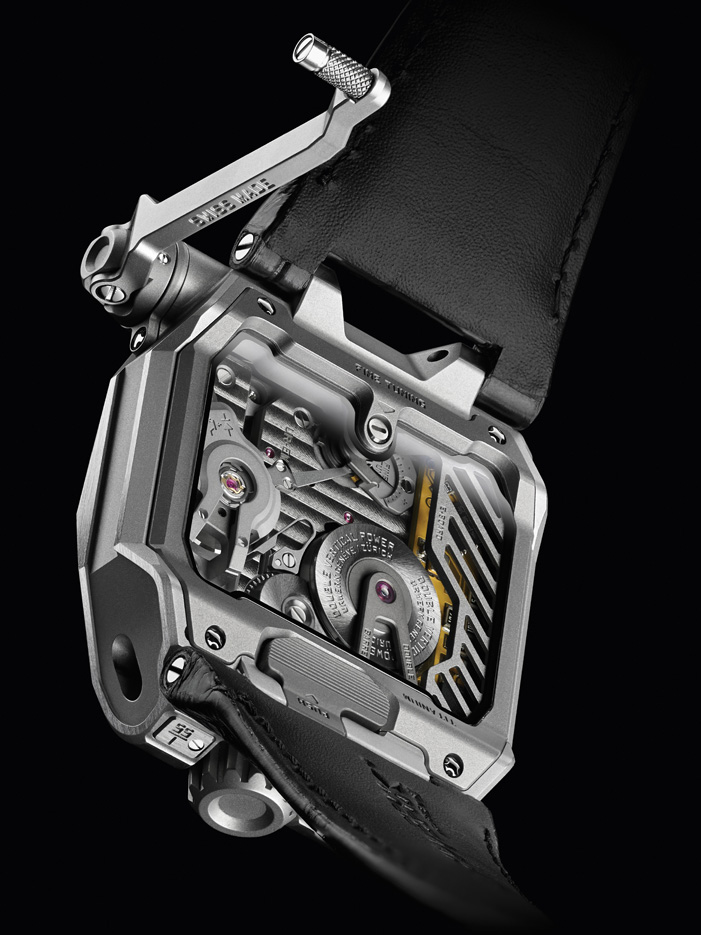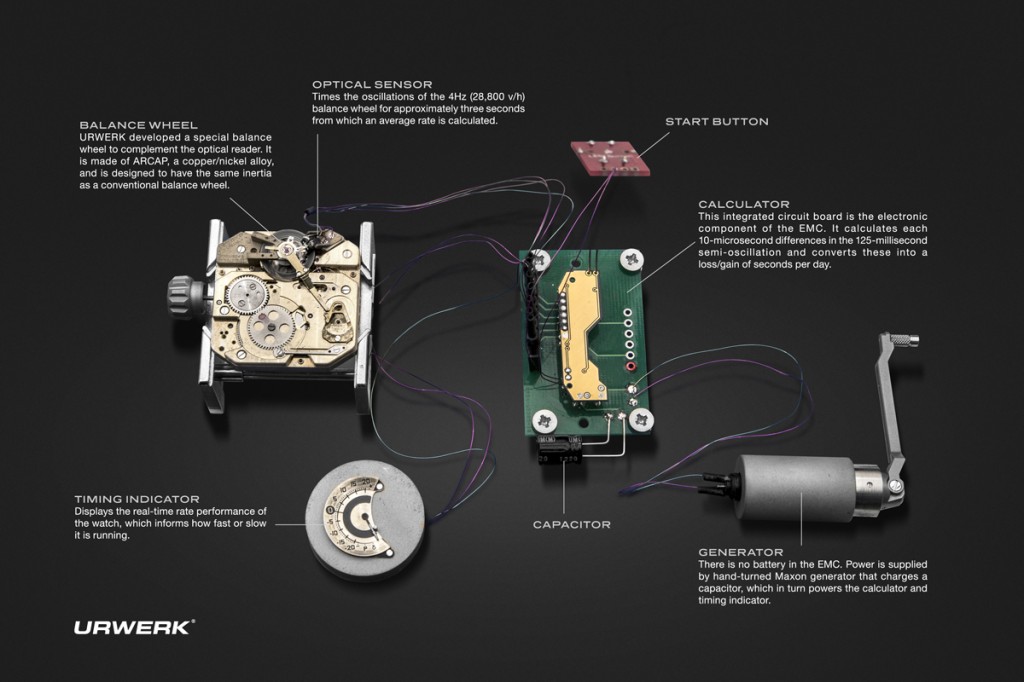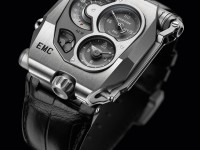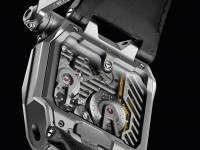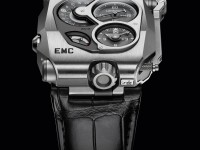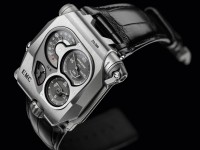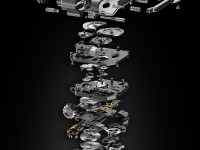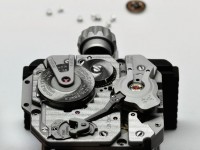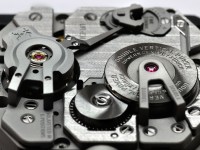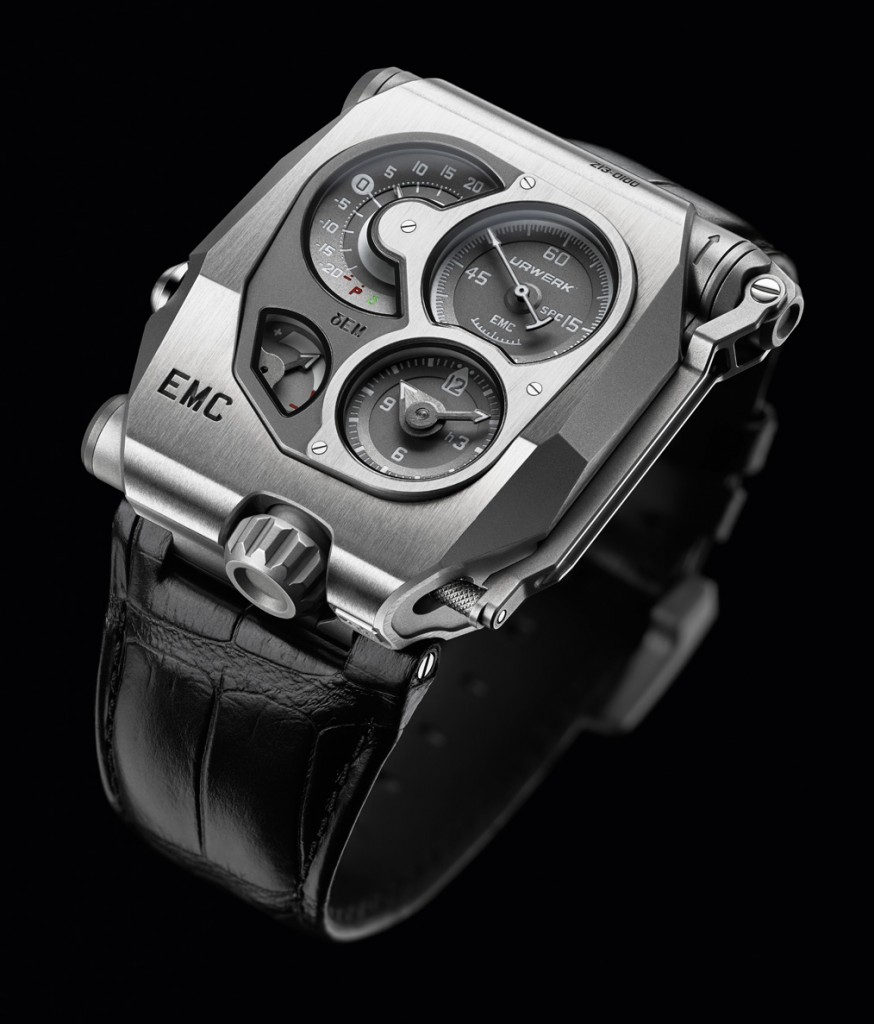 If you didn’t already know we have a bit of a thing for Urwerk’s and their haute horlogerie, coupled with their innovative mechanical movements and never-ending pursuit to produce some of the most interesting designs available today. This is the Urwerk EMC (Electro Mechanical Control). A few weeks ago we tweeted about this innovative movement but now here it is in its entirety and it is a head turner. The EMC is the first precision mechanical watch that enables timing to be both easily monitored and adjusted by its owner.
If you didn’t already know we have a bit of a thing for Urwerk’s and their haute horlogerie, coupled with their innovative mechanical movements and never-ending pursuit to produce some of the most interesting designs available today. This is the Urwerk EMC (Electro Mechanical Control). A few weeks ago we tweeted about this innovative movement but now here it is in its entirety and it is a head turner. The EMC is the first precision mechanical watch that enables timing to be both easily monitored and adjusted by its owner.
You may ask what this means? All watchmakers have on their bench something they call a Witschi – it’s an instrument to test the precision of mechanical movements. This impartial and uncompromising judge ‘listens’ to the rhythm of the balance and makes a verdict on the performance of the movement by measuring the timing rate, the number of seconds the movement gains or loses in 24 hours. The Urwerk EMC incorporates a Witschi-like measuring instrument in a mechanical allow the wearer to fine-tune there timepiece at the touch of a button.
EMC features a deconstructed dial with four separate indications: A clockwise tour of the displays, from top left, presents the: on demand, precision indicator (instantaneous rate delta δ) ranging from -20 to + 20 seconds per day; seconds dial with counter-balanced seconds hand; hours and minutes; and 80-hour power reserve indicator. Turning EMC over reveals the fully in-house movement with the integrated circuit board – the EMC ‘brain’ –, the top of one of the two mainspring barrels near the crown and the top of the balance wheel and optical sensor on the winding handle side.
On the balance wheel there is n optical sensor capturing the precise rate of oscillation of the 4 hertz / 28,800 vph regulator, over a period of 3 seconds. This sensor consists of a transmitter and a receiver positioned either side of the balance, and is triggered manually by pressing a button on the left side of the case. Also incorporated is a 16,000,000-hertz electronic oscillator that provides EMC’s baseline timing rate that the movement is measured against. Lastly, there is a computer that determines the difference between the timing rate of the movement and that of the reference oscillator – which expresses the difference in gain or loss of seconds per day. Urwerk EMC’s monitoring unit (the optical sensor and the computer) is powered by a micro-generator made by the Swiss company Maxon, which is well-known for developing motors for NASA’s Mars rovers.
See the pictures below; which I believe will help you understand how it all works…
In my mind this watch is a fantastic piece of horological art taking mechanical watches to a new era in timekeeping. In recent designs Urwerk have tended to show larger open dials of the movements workings. However, this time around they’ve focused on innovation. The only criticism I have of this new piece is the small dial, lets not forget this is the main reason we buy timepieces. But when you consider all this in-house movement technology is encased in 43mm brushed titanium – it does make it rather easily wearable.
When released the EMC will retail at $120,000. It will be interesting to see if the layout of the dial translates better when we get a chance to get our hands on one? For more information on the EMC visit the official Urwerk website.
